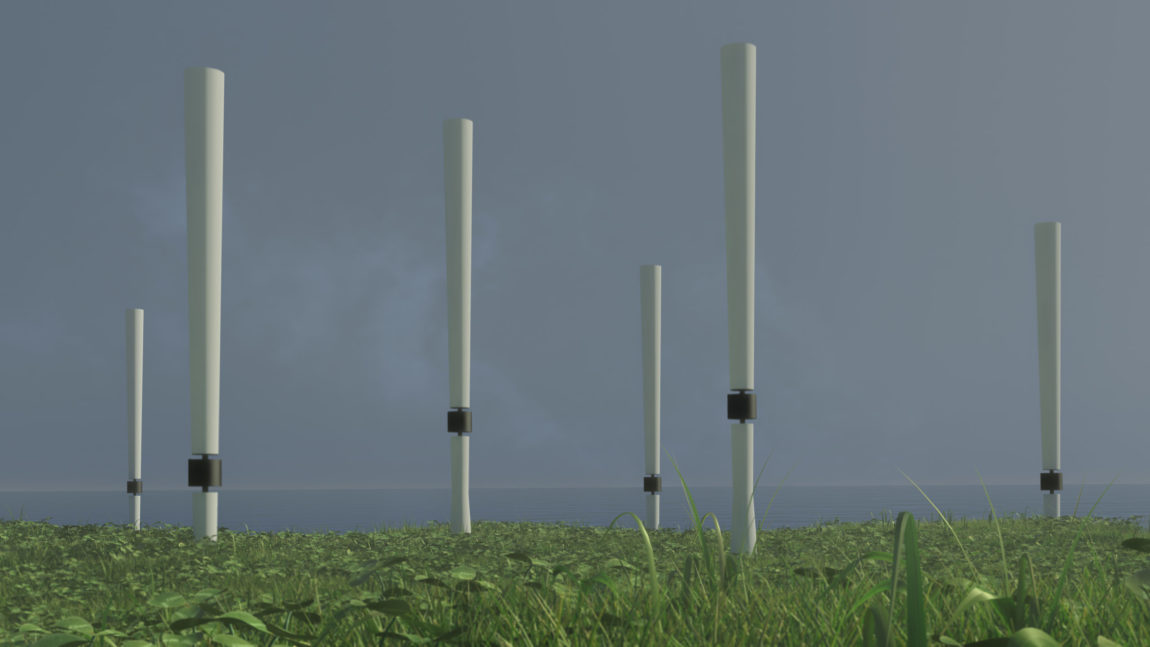Jaideep Saraswat, Vasudha Foundation
India’s power sector is undergoing a substantive overhaul on several tenets. First, it has transitioned from a power deficit to a surplus nation due to accelerated capacity additions.[1] Second, access to electricity has been provided to all the willing households in India.[2] Third, the honorable prime minister of India has raised India’s renewable energy target from 175 GW by 2022 to 450 GW by 2030.[3] More impressively, India has achieved 37% power generation capacity from non-fossil fuel sources and is set to achieve the Nationally Determined Contribution (NDC) target of 40% by 2030 soon.[4] Though the trajectory of growth seems to exalt certain aspects, critical concerns that require immediate attention such as the apathetic growth of decentralized power generation are lost in the narrative.
Currently, most of India’s electricity is produced at large facilities and then transmitted around the country for local use as shown in Figure 1. This system worked wonders under low demand levels that allowed a few large facilities to provide power to a wide range of customers with minimal investment in building long transmission lines. But, with time, the inherent risks and flaws in such a system are emerging – especially given the shift in power generating technology over the last half-decade. People are moving from being passive receivers of energy from distant terminals to actively controlling their energy requirements including on-site generation. When centralized power plants transmit energy over long distances, some part of that energy is lost due to inherent losses in the system. Also, in this model, a loss in service at any point in the grid means a wide-scale grid outage. And the centralized power plants require a vast swathe of land which might impact the flora and fauna of the location.
Figure 1: Decentralized v/s Centralized Generation Capacity in India [5]

Decentralized power generation is fundamentally different. It averts transmission losses accrued in the former while reducing the need for more investment in building transmission infrastructure. This infrastructure in itself can be accrued to add more decentralized renewable capacity to the system. These systems will ensure fair, equitable, and more reliable electricity provision while bringing with them the promise of connecting energy storage technologies in the future to make the power more dispatchable.
India’s clean energy future requires a paradigm shift in the electricity distribution system. The technical challenges are significant but surmountable, and already the leading countries like Germany are finding the solutions (Refer Table 2). Though today’s dominant energy model is centralized, large-scale, and focused on increasing supply, its successor will be decentralized, downsized, and directed towards meeting demand. And the transition should be urgent because decisions made now in the power planning process can be on the balance sheet of investors for 25 years or more.
Table 2: Decentralized v/s Centralized Ratio in other countries[6]
| Countries | Total Generation (GW–2018) | Centralized Generation (GW– 2018) | Decentralized Generation (GW– 2018) | D/C Ratio (2018) |
| USA | 1100 | 920 | 180 | 20% |
| Germany | 198.45 | 158.45 | 40 | 25% |
| China | 1360.19 | 1262.24 | 97.95 | 8% |
Reasons for low solar PV adoption
Of late, the Government of India has focused more on solar PV plants for decentralized generation through sundry supply and demand-side interventions. First, India has set an ambitious target to achieve 40 GW of rooftop solar target by 2022. Second, the residential consumers are getting direct subsidies for installing solar PV plants with a capacity of less than 10 kW. Third, several new policies and rules have come in place focusing specifically on solar PV systems like PM KUSUM, etc. Still, the uptake is lackluster.
The reason behind this is two-fold. The government envisions a one size fits all solution where solar PV is promoted across geographies without taking into account the insolation at the location. Next, the solar PV systems are intermittent and the high prices of batteries to make the power firmer adds to the woes.
Can bladeless wind turbines be the alternative?
It is important to emphasize other technologies as well. There exist myriad solutions which have been technologically proven and await commercial realization through similar policy support bestowed on solar PV. Moreover, this will avoid over-dependence on a technology that might lead to a lock-in of large-scale investment in case it gets obsolete in the coming future.
Bladeless wind turbines are the case in point. These wind turbines use vortex-induced vibrations for generating electricity and are very similar to solar PV panels in terms of modularity. Moreover, the presence of strong complementarity of wind and solar generation enjoyed by centralized plants can now be available for the latter. Since the center of gravity of these turbines is closer to the ground, the requirement of the foundation is reduced by 50%.[1] And due to the lack of rotating parts (common in run-of-the-mill bladed wind turbines), the requirement for operation and maintenance is substantially reduced. These turbines are also capable of generating electricity at very low wind speeds (3 m/s start-speed) experienced in residential and urban settlements and are also prevalent in most of India. Finally, these wind turbines are not impacted by the wake effect[2] which makes their citing easier in smaller spaces.
[1] https://vortexbladeless.com/technology-design/
[2] Wake Effect- Reduction in wind speed and increased perturbation behind the turbine
Need for Introspection
Currently, India should reflect upon this question. Does it make sense to pursue strategies such as accelerating the development of new high-voltage power lines that reinforce an outdated paradigm of electricity delivery, or should scarce energy investment be spent to add new clean, local energy to the grid in the most cost-effective manner? And if the response is latter, sensible incentives for other renewable energy sources must be bestowed that broadens the opportunity for decentralized systems, going forward.
[1] https://pib.gov.in/PressReleaseIframePage.aspx?PRID=1706925
[3] https://pib.gov.in/PressReleasePage.aspx?PRID=1745254
[4] https://economictimes.indiatimes.com/industry/renewables/india-shines-in-energy-transition-with-strong-renewable-path/articleshow/85322333.cms?from=mdr
[5] *Decentralized Generation includes Solar Rooftop; Small Hydro Power; Biomass cogeneration (Captive power); Waste to Power; Off-grid power (From- https://powermin.gov.in/en/content/power-sector-glance-all-india)
[6] https://www.epa.gov/energy/centralized-generation-electricity-and-its-impacts-environment




